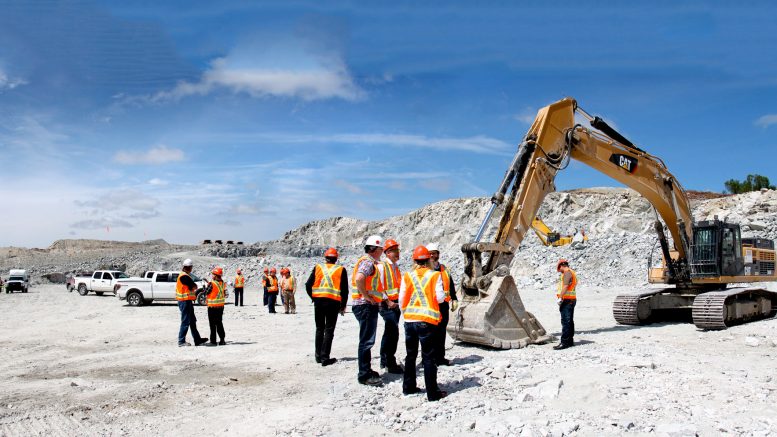GoldSpot Discoveries Corp. (TSXV: SPOT; OTCQX: SPOFF) will use its proprietary machine learning and artificial intelligence technology to look for lithium and tantalum exploration targets at Critical Elements Lithium‘s (TSXV: CRE; US OTCQX: CRECF) landholdings in Quebec, Canada.
The technology was pioneered in the gold exploration industry, evolving to work across all commodities and deposit types.
GoldSpot will work closely with the Critical Elements technical team to analyse geoscience datasets to develop and refine so-called Smart Targets at the company’s 100%-owned assets encircling the advanced Rose lithium project. The 700 sq.km of prospective lands are said to feature several lithium showings and nickel, copper, and gold.
The GoldSpot AI approach can take large land packages and distil all available layers of geological information to identify the most efficient and cost-effective way to explore the prospective ground.
Critical Elements CEO Jean-Sébastien Lavallée says the renewed focus on exploration comes on the heels of solid recent progress at the company’s flagship Rose development project. “[The work] aims to show the full potential as part of the development plan put in place by our team to become a responsible large lithium producer,” he says in a media release.
In March, the company started a high-resolution heliborne magnetic survey of 17,187-line kilometres over the project and its extensive portfolio of properties located on the Eeyou Istchee James Bay territory.
The survey was aimed at finding structures that could become high-priority future lithium exploration targets.
In 2017, the Critical Elements completed a feasibility study on Rose Phase 1. The mine plan entails producing high-quality spodumene concentrate for downstream processing to battery precursor chemicals.
The project is estimated to produce an average of 429 tonnes of tantalum concentrate, 186,327 tonnes of chemical, and 50,205 tonnes of technical-grade lithium concentrates a year.
The economic study calculated an internal rate of return for the project at 34.9% after-tax, with a net present value estimated at C$726 million at an 8% discount rate.
In March, Quebec’s Environmental and Social Impact Review Committee published its draft report, concluding the project was not likely to cause significant adverse environmental effects. It did, however, impose several mitigation conditions.
In April, the company signed an option agreement giving Lomiko Metals a right to acquire up to a 70% interest in Critical Elements’ non-core Bourier project.
Lithium prices have been increased significantly since the start of the year, and lithium carbonate prices have nearly doubled from $6,000 to $7,000 per metric tonne to more than US$12,000 per metric tonne. This is in line with the growth in the electric vehicle sector, which is creating additional demand significantly faster than increasing supply can provide, according to Critical Elements data.
The company sees a gap emerging of about 900,000 to one million tonnes of lithium carbonate equivalent in the medium term. This is equal to an additional seven million tonnes of LCE required from 2019 through 2025, or about 1.4 million tonnes per year of LCE.


Be the first to comment on "GoldSpot AI to look for lithium, tantalum targets in Quebec"